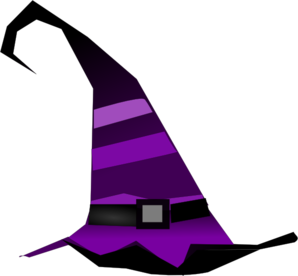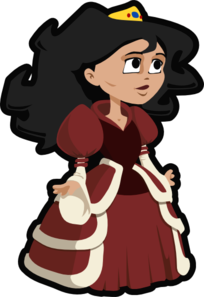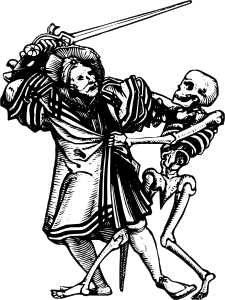Hello!
Welcome to part 2 of my Fairy Tale series, where we discuss the importance of evil in fairy tales. Grab the popcorn; this is going to be a fun one. (And a long one; sorry.) Please feel free toargue discuss in the comments.
If you missed the earlier posts, you can find them here and here.

Fairy tales have been around a long time. Cinderella originated in the East long before Grimm and Perrault gave their views. The reason they've survived in our technological and informational age is
that every listener and reader has had something to gain from it, so they tell their own version to someone else. Think of your favorite fairy tale from when you were little. Can you remember what you were going through? Maybe you can even remember something specific that's stuck with you. All literature is like this, really; it's just that printed words are more permanent. When children read or hear a fairy tale over and over, they internalize it. They fit the words to their own world and problems and take away their own meanings. Bettelheim has some great stories about children who clung to fairy tales as a reminder that they could make it through anything. How does this get accomplished? What drives the hero to success?
Enter the antagonist.
It might be an evil stepmother, it might be jealous sisters. It might be an impossible task the hero needs to do, like climb a glass mountain. In every fairy tale, Something blocks the hero's way and keeps him/her from getting what he/she wants. And really, this is the key to the hero's success. Where would Luke Skywalker be if the stormtroopers hadn't burned down his house? Just as in real life, conflict forces the hero to grow and change and accomplish the seemingly impossible. And children need reminders that it's possible. We know from research that when children play superheroes or turn something into a weapon, it helps children work through whatever problem they're facing at the time. Fairy tales are no different. A younger child who feels teased by siblings may identify with Cinderella. A foster child might identify with Rapunzel or the Little Mermaid, finding somewhere they belong. Maybe Allerleirauh offers hope for escape from a difficult situation. Perhaps they're just angry because they weren't able to do what they wanted or they feel that their homework is impossible.
And what do we know about fairy tales? "And they lived happily ever after." The evil is always vanquished, the girl gets the prince or the prince gets the girl, the seemingly impossible obstacle is overcome. It never varies. Fairy tales offer children hope that no matter what, they can work through their situations and emerge victorious. I'm going to talk more about this in the next installment about gender roles, but in the meantime, keep this in mind as you read the next section.
Now, this is where it gets fun. I'd love to hear your thoughts below.
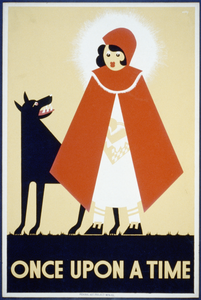 There's a term called "bowdlerization." Long ago, there was someone named Thomas Bowdler who looked at Shakespeare's works and thought they were unsuitable for his family, so he took out the worst parts and republished them. This gave rise to the term "bowdlerization," which has come to mean the sanitizing of stories for more general use. Some books leave out the wolf's desire to eat the pigs, for example. Now, this isn't a bad thing in itself. I think we can all agree that Shakespeare's works are too mature and violent for children. But what about fairy tales? In general, they were written specifically for children, yet we see plenty of violence. Stepsisters cut off parts of their own feet. Rapunzel's prince is blinded. The Little Mermaid feels pain with every step she takes. And worse.
There's a term called "bowdlerization." Long ago, there was someone named Thomas Bowdler who looked at Shakespeare's works and thought they were unsuitable for his family, so he took out the worst parts and republished them. This gave rise to the term "bowdlerization," which has come to mean the sanitizing of stories for more general use. Some books leave out the wolf's desire to eat the pigs, for example. Now, this isn't a bad thing in itself. I think we can all agree that Shakespeare's works are too mature and violent for children. But what about fairy tales? In general, they were written specifically for children, yet we see plenty of violence. Stepsisters cut off parts of their own feet. Rapunzel's prince is blinded. The Little Mermaid feels pain with every step she takes. And worse.
I'd like to present two theories. You decide which one you ascribe to, but I ask you to consider each. In the end, it's up to you to examine your own theories of education and how you feel you should best protect and teach children.
1. Fairy tales are too gruesome.
A book I own, "Grimm's Grimmest," suggests that some of the more gory tales were, in fact, not originally for children at all. In fact, it was closer to modern adults enjoying Game of Thrones or horror movies. Grimm and Perrault both changed aspects of the fairy tales they had heard to make them more suitable for children. Grimm removed any references to pregnancy, for example, while Perrault focused more on telling the stories to court, resulting in Disney's Cinderella. (Think about Perrault's Puss in Boots, one of my personal fairy tales.) When Grimm, Anderson, and Perrault were developing their fairy tales, we had stories that violently punished children doing wrong in order to teach moral values. Even Mark Twain satirized these stories. Research supports families in saying that children exposed to lots of violence on tv and in media can cause them to act aggressively later on. Today, in our already violent culture, fairy tales need to be sanitized for today's audience so we can show children how to be compassionate. In the tale of the Ant and the Grasshopper, the grasshopper doesn't die; the ant lets him stay, even though the grasshopper never did any work.*
2. Fairy Tales are gruesome, but it's ok because the villains get what they deserve.
 Children are violent. We could go on about nature v. nurture and tabula rasa, but the fact is that children's stories today are still loaded with violence. We have all of the superhero movies. Kids' Choice Award nominees include "Teen Titans," "Adventure Time," and "Teenage Mutant Ninja Turtles" (all violent). Children's play outside turns sticks into guns and swords.
Children are violent. We could go on about nature v. nurture and tabula rasa, but the fact is that children's stories today are still loaded with violence. We have all of the superhero movies. Kids' Choice Award nominees include "Teen Titans," "Adventure Time," and "Teenage Mutant Ninja Turtles" (all violent). Children's play outside turns sticks into guns and swords.
We do, however, know some interesting research. Superhero play promotes prosocial play. Research shows that when children grow up and play violent video games, they are less likely to be violent in real life. And the reason is simple: these stories take place "Once upon a time, in a land far away." Ask your five-year-olds if what you just read is real and they'll tell you truthfully. Children know that
they're not really supposed to hurt people, so violence in stories gives them an outlet, a safe place to carry out their violent fantasies, according to Bettelheim. This may not apply to heroes, whom children empathize with, but it certainly applies to villains.
And here's the difference for the purposes of this theory: in fairy tales, villains are the aggressors and get what they deserve, while heroes are more innocent.
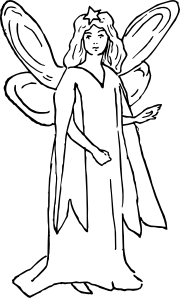 And the worse the villain is, the worse their punishment is, the more the child can feel a sense of justice and hope. The more the child can learn what's right and how to triumph over obstacles. Bettelheim points out that often, villains bring their own destruction on themselves. Let's look at an example: the Three Little Pigs. In sanitized versions, the wolf blows down the houses, the pigs hide in their brothers' house, and finally the wolf gets frustrated and runs away, never to be seen again. In the original story, the wolf blows down the house, eats the pig, and moves on to the next. Finally, he
And the worse the villain is, the worse their punishment is, the more the child can feel a sense of justice and hope. The more the child can learn what's right and how to triumph over obstacles. Bettelheim points out that often, villains bring their own destruction on themselves. Let's look at an example: the Three Little Pigs. In sanitized versions, the wolf blows down the houses, the pigs hide in their brothers' house, and finally the wolf gets frustrated and runs away, never to be seen again. In the original story, the wolf blows down the house, eats the pig, and moves on to the next. Finally, he
gets tricked by the final pig multiple times until he decides to break in and gets boiled alive. Sounds pretty gruesome, right? But let's take a look at the lessons children are learning. What's the moral of the first story? "Even if you're stupid and build a house of straw, you can always count on your older brother for shelter." "Don't worry about that bully; if you have a strong defense, eventually he'll give up and you might not see him again. Probably." "If you're mean to people, nothing's going to happen to you except you might get a little sad." Now, let's look at the second one. "If you build a flimsy house, it's going to fall down." "If someone's bothering you, you can outsmart them." "If you're mean to people, you're going to get what you deserve." Fairy tales are designed to teach lessons about how we should act and the more gruesome the punishment, the more children will be scared away, especially if there is an adult to help them through their thought processes.
I'll give you a personal example. When I was 7, my favorite book was Roald Dahl's "Matilda." I shared her love of books and I loved all the tricks she pulled on the adults. Because in Dahl's world, many adults are evil. Matilda's own parents verbally abuse her while bragging about cheating customers. They won't let her explore her own interests. School isn't safe, either. Her teacher is nice and loving, but the headmistress is quite the opposite. She locks our hero in a cupboard filled with spikes as punishment. She throws another child over the fence by her hair because the child wore braids. That's why it was so rewarding to see Matilda find a safe haven with her teacher and eventually drive out the evil. As horrific as I found the punishments, I never got scared because good
triumphed in the end. Dahl didn't talk down to children. His message, throughout his books, is that evil exists and we can beat it. Isn't this a fantastic lesson?
So, which theory do you believe?
All images from clker.com
Continue to part three.
Welcome to part 2 of my Fairy Tale series, where we discuss the importance of evil in fairy tales. Grab the popcorn; this is going to be a fun one. (And a long one; sorry.) Please feel free to
If you missed the earlier posts, you can find them here and here.

Fairy tales have been around a long time. Cinderella originated in the East long before Grimm and Perrault gave their views. The reason they've survived in our technological and informational age is
that every listener and reader has had something to gain from it, so they tell their own version to someone else. Think of your favorite fairy tale from when you were little. Can you remember what you were going through? Maybe you can even remember something specific that's stuck with you. All literature is like this, really; it's just that printed words are more permanent. When children read or hear a fairy tale over and over, they internalize it. They fit the words to their own world and problems and take away their own meanings. Bettelheim has some great stories about children who clung to fairy tales as a reminder that they could make it through anything. How does this get accomplished? What drives the hero to success?
Enter the antagonist.
It might be an evil stepmother, it might be jealous sisters. It might be an impossible task the hero needs to do, like climb a glass mountain. In every fairy tale, Something blocks the hero's way and keeps him/her from getting what he/she wants. And really, this is the key to the hero's success. Where would Luke Skywalker be if the stormtroopers hadn't burned down his house? Just as in real life, conflict forces the hero to grow and change and accomplish the seemingly impossible. And children need reminders that it's possible. We know from research that when children play superheroes or turn something into a weapon, it helps children work through whatever problem they're facing at the time. Fairy tales are no different. A younger child who feels teased by siblings may identify with Cinderella. A foster child might identify with Rapunzel or the Little Mermaid, finding somewhere they belong. Maybe Allerleirauh offers hope for escape from a difficult situation. Perhaps they're just angry because they weren't able to do what they wanted or they feel that their homework is impossible.
And what do we know about fairy tales? "And they lived happily ever after." The evil is always vanquished, the girl gets the prince or the prince gets the girl, the seemingly impossible obstacle is overcome. It never varies. Fairy tales offer children hope that no matter what, they can work through their situations and emerge victorious. I'm going to talk more about this in the next installment about gender roles, but in the meantime, keep this in mind as you read the next section.
 There's a term called "bowdlerization." Long ago, there was someone named Thomas Bowdler who looked at Shakespeare's works and thought they were unsuitable for his family, so he took out the worst parts and republished them. This gave rise to the term "bowdlerization," which has come to mean the sanitizing of stories for more general use. Some books leave out the wolf's desire to eat the pigs, for example. Now, this isn't a bad thing in itself. I think we can all agree that Shakespeare's works are too mature and violent for children. But what about fairy tales? In general, they were written specifically for children, yet we see plenty of violence. Stepsisters cut off parts of their own feet. Rapunzel's prince is blinded. The Little Mermaid feels pain with every step she takes. And worse.
There's a term called "bowdlerization." Long ago, there was someone named Thomas Bowdler who looked at Shakespeare's works and thought they were unsuitable for his family, so he took out the worst parts and republished them. This gave rise to the term "bowdlerization," which has come to mean the sanitizing of stories for more general use. Some books leave out the wolf's desire to eat the pigs, for example. Now, this isn't a bad thing in itself. I think we can all agree that Shakespeare's works are too mature and violent for children. But what about fairy tales? In general, they were written specifically for children, yet we see plenty of violence. Stepsisters cut off parts of their own feet. Rapunzel's prince is blinded. The Little Mermaid feels pain with every step she takes. And worse.I'd like to present two theories. You decide which one you ascribe to, but I ask you to consider each. In the end, it's up to you to examine your own theories of education and how you feel you should best protect and teach children.
1. Fairy tales are too gruesome.
A book I own, "Grimm's Grimmest," suggests that some of the more gory tales were, in fact, not originally for children at all. In fact, it was closer to modern adults enjoying Game of Thrones or horror movies. Grimm and Perrault both changed aspects of the fairy tales they had heard to make them more suitable for children. Grimm removed any references to pregnancy, for example, while Perrault focused more on telling the stories to court, resulting in Disney's Cinderella. (Think about Perrault's Puss in Boots, one of my personal fairy tales.) When Grimm, Anderson, and Perrault were developing their fairy tales, we had stories that violently punished children doing wrong in order to teach moral values. Even Mark Twain satirized these stories. Research supports families in saying that children exposed to lots of violence on tv and in media can cause them to act aggressively later on. Today, in our already violent culture, fairy tales need to be sanitized for today's audience so we can show children how to be compassionate. In the tale of the Ant and the Grasshopper, the grasshopper doesn't die; the ant lets him stay, even though the grasshopper never did any work.*
2. Fairy Tales are gruesome, but it's ok because the villains get what they deserve.
 Children are violent. We could go on about nature v. nurture and tabula rasa, but the fact is that children's stories today are still loaded with violence. We have all of the superhero movies. Kids' Choice Award nominees include "Teen Titans," "Adventure Time," and "Teenage Mutant Ninja Turtles" (all violent). Children's play outside turns sticks into guns and swords.
Children are violent. We could go on about nature v. nurture and tabula rasa, but the fact is that children's stories today are still loaded with violence. We have all of the superhero movies. Kids' Choice Award nominees include "Teen Titans," "Adventure Time," and "Teenage Mutant Ninja Turtles" (all violent). Children's play outside turns sticks into guns and swords.We do, however, know some interesting research. Superhero play promotes prosocial play. Research shows that when children grow up and play violent video games, they are less likely to be violent in real life. And the reason is simple: these stories take place "Once upon a time, in a land far away." Ask your five-year-olds if what you just read is real and they'll tell you truthfully. Children know that
they're not really supposed to hurt people, so violence in stories gives them an outlet, a safe place to carry out their violent fantasies, according to Bettelheim. This may not apply to heroes, whom children empathize with, but it certainly applies to villains.
And here's the difference for the purposes of this theory: in fairy tales, villains are the aggressors and get what they deserve, while heroes are more innocent.
 And the worse the villain is, the worse their punishment is, the more the child can feel a sense of justice and hope. The more the child can learn what's right and how to triumph over obstacles. Bettelheim points out that often, villains bring their own destruction on themselves. Let's look at an example: the Three Little Pigs. In sanitized versions, the wolf blows down the houses, the pigs hide in their brothers' house, and finally the wolf gets frustrated and runs away, never to be seen again. In the original story, the wolf blows down the house, eats the pig, and moves on to the next. Finally, he
And the worse the villain is, the worse their punishment is, the more the child can feel a sense of justice and hope. The more the child can learn what's right and how to triumph over obstacles. Bettelheim points out that often, villains bring their own destruction on themselves. Let's look at an example: the Three Little Pigs. In sanitized versions, the wolf blows down the houses, the pigs hide in their brothers' house, and finally the wolf gets frustrated and runs away, never to be seen again. In the original story, the wolf blows down the house, eats the pig, and moves on to the next. Finally, he gets tricked by the final pig multiple times until he decides to break in and gets boiled alive. Sounds pretty gruesome, right? But let's take a look at the lessons children are learning. What's the moral of the first story? "Even if you're stupid and build a house of straw, you can always count on your older brother for shelter." "Don't worry about that bully; if you have a strong defense, eventually he'll give up and you might not see him again. Probably." "If you're mean to people, nothing's going to happen to you except you might get a little sad." Now, let's look at the second one. "If you build a flimsy house, it's going to fall down." "If someone's bothering you, you can outsmart them." "If you're mean to people, you're going to get what you deserve." Fairy tales are designed to teach lessons about how we should act and the more gruesome the punishment, the more children will be scared away, especially if there is an adult to help them through their thought processes.
I'll give you a personal example. When I was 7, my favorite book was Roald Dahl's "Matilda." I shared her love of books and I loved all the tricks she pulled on the adults. Because in Dahl's world, many adults are evil. Matilda's own parents verbally abuse her while bragging about cheating customers. They won't let her explore her own interests. School isn't safe, either. Her teacher is nice and loving, but the headmistress is quite the opposite. She locks our hero in a cupboard filled with spikes as punishment. She throws another child over the fence by her hair because the child wore braids. That's why it was so rewarding to see Matilda find a safe haven with her teacher and eventually drive out the evil. As horrific as I found the punishments, I never got scared because good
triumphed in the end. Dahl didn't talk down to children. His message, throughout his books, is that evil exists and we can beat it. Isn't this a fantastic lesson?
So, which theory do you believe?
All images from clker.com
Continue to part three.





